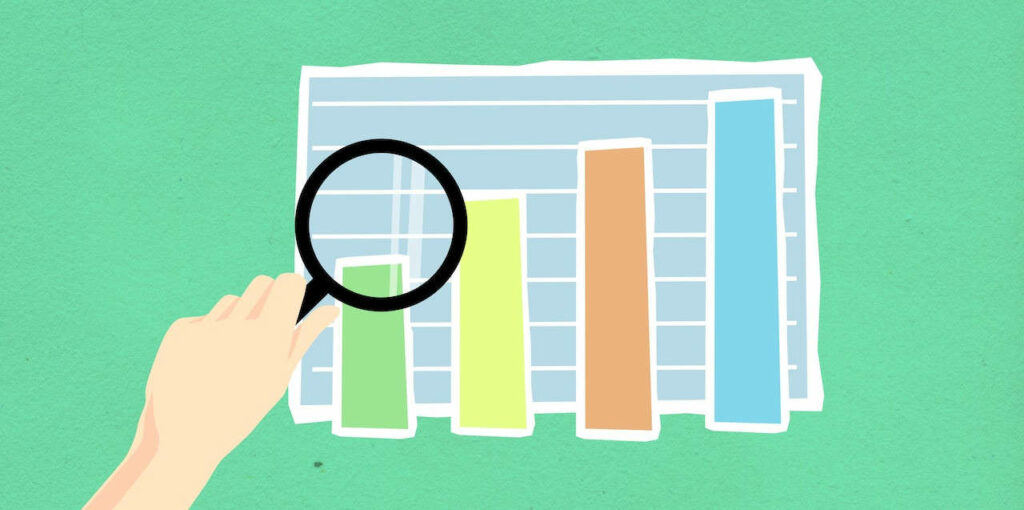There's no better time to ask yourself how to become a data analyst in Canada. The Data environment is exploding worldwide, with quintillion bytes of data generated each day. This causes the appearance of new jobs and career path for all people interested in this sector.
Data analytics is a field full of job opportunities, as companies in telecommunications, insurance, finance, banking, healthcare, media and technology are building out their analytics department. Let's dive into the heart of this article by recalling the role of the data analyst, how you can become a data analyst in Canada and launch your career successfully.
Understand the role of a Data Analyst
Before pursuing a career in data analytics, it is crucial to understand the responsibilities and expectations of the job. Data Analysts are expected to work with large amounts of data and use various tools and software to analyze it. They must be able to communicate their findings to stakeholders and make data-driven decisions.
Their missions are plural and include collecting, processing and analyzing data, detecting patterns and opportunities, designing data visualizations and delivering reports to support the decision-making process. The analyses can be summarized into 4 different categories:
- “Descriptive analytics”: What happened?
- “Diagnostic analytics”: Why did this happen?
- “Predictive analytics”: What is likely to happen?
- “Prescriptive analytics”: What actions should be taken?
What’s the difference between a Data Scientist and a Data Analyst?
While the roles of a Data Scientist and a Data Analyst share some similarities, they are different in several key ways.
Data analysts typically focus on collecting, cleaning, and organizing data. They also use various tools and software to analyze data and identify patterns and insights. Their primary objective is to help organizations make data-driven decisions based on the data they have collected and analyzed.
Data scientists are skilled in programming languages like Python and R and often work on developing predictive models and algorithms. Data Scientists also have a stronger focus on the business application of data and may be responsible for developing new data products or improving existing ones.
In summary, while Data Analysts focus on analyzing data and providing insights to drive decision-making, Data Scientists may work on complex data science projects, including machine learning and data modeling.

Enroll in a Data Analyst course
If you are still in graduate school, you can choose to do a Bachelor’s degree or a Master in Data Analytics. You will then obtain a degree and have the opportunity to do an internship in an organization to take your first steps as a Data Analyst.
If you have already finished your studies, you can still take a Data Analyst course. Thanks to a bootcamp over 9 weeks full-time or part-time for 6 months, you will acquire all the necessary skills, get a recognized diploma and certificate delivered by University La Sorbonne.
During the program, you are introduced to:
- Python
- Machine Learning
- Data Visualization
- Analysis of Data
- Data mining and management
- Big Data & Database
- Business Intelligence.
Each course is delivered in a hybrid learning format, combining a course platform and masterclasses led by a Data Scientist.
Throughout your data analyst training, you’ll work on a 80-hours project to apply what you just learned to a real project. This allows you to have a first concrete experience and to add this project to your portfolio.
Apply for a job as a data analyst in Canada
Once you are trained, a wide range of Data Analyst jobs are available to you. The first question to ask yourself is what industry you want to work in. Today, data is a skill all sectors want to use. The industries most in need of Data Analyst profiles are :
- Energy, oil and gas
- Technology
- Automotive
- Financial services & banking
- Telecom
- Media & Entertainment
- Agriculture
- Automotive
- Insurance Industry
- Digital Marketing
- Retail
- Cybersecurity.
Secondly, you can ask yourself which city you want to work in. If you don’t find any opportunities in your city, don’t hesitate to look in Toronto, Vancouver or Oakville. Larger cities often offer more opportunities. This is due to the presence of the headquarters of large companies such as Meta, Amazon or IBM.
You are now ready to apply for Data Analyst positions. You can find job openings on job boards, LinkedIn, and company websites. To increase your chances of success, tailor your resume and cover letter to highlight your relevant skills and experiences. You can also discover the average Data Analyst salary in Canada here.

Develop your skills and experience
Keep the hunger to learn and apply your skills to new projects. The best way to progress in the world of Data Science is to work, use the right tools, progress in all areas and develop your soft skills.
Indeed, a Data Analyst must have a great sense of communication and business. His charts have an impact on the decisions taken by the organization. Therefore, he must understand how his models and the presentation of his data make the most sense and bring the most clarity to the stakeholders of the company.
When there is an opportunity to apply data analysis tools or visualization tools, do not hesitate to take part in that project. Being able to analyze data, get insights from data sets and use Machine Learning is a massive asset in this modern world.
Finally, networking is a crucial step towards becoming a successful Data Analyst. You can build your network by attending industry events, participating in online forums, and connecting with professionals on LinkedIn. Networking provides opportunities to learn from experienced professionals, stay updated on industry trends, and build relationships with potential employers.
Become a Data Analyst in Canada in 2 lines
To become a Data Analyst in Canada, apply to be a part of the upcoming Bootcamp. Depending on your schedule, you can take the full-time training over 9 weeks or part-time over 6 months. After completing the training, you can apply to a job in the industry of your choice based on your interests and passions. Data Analyst profiles are particularly in demand these days, so it’s an excellent opportunity to advance your career.










